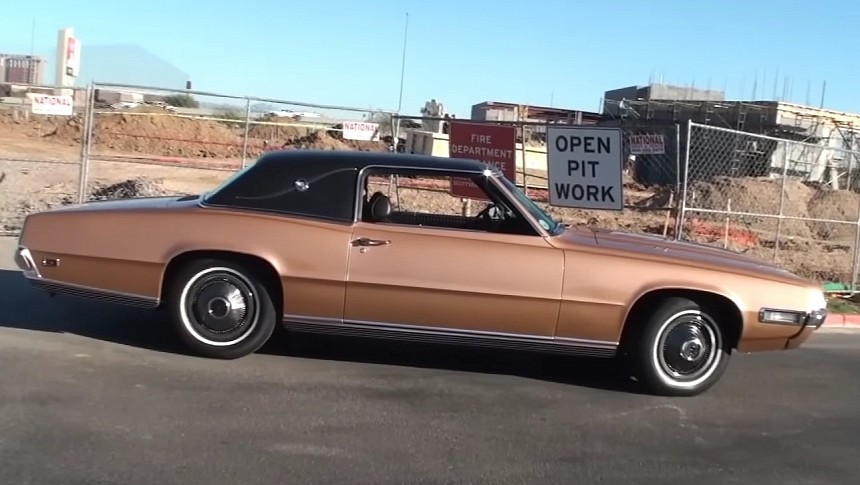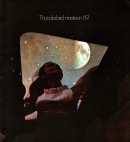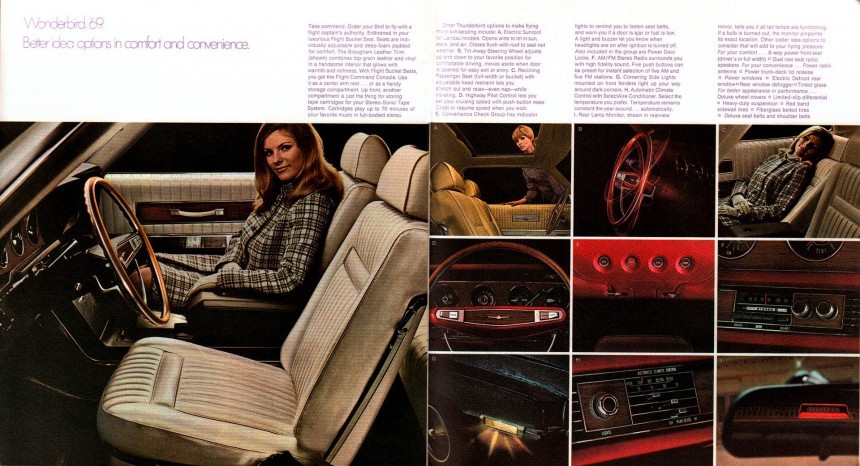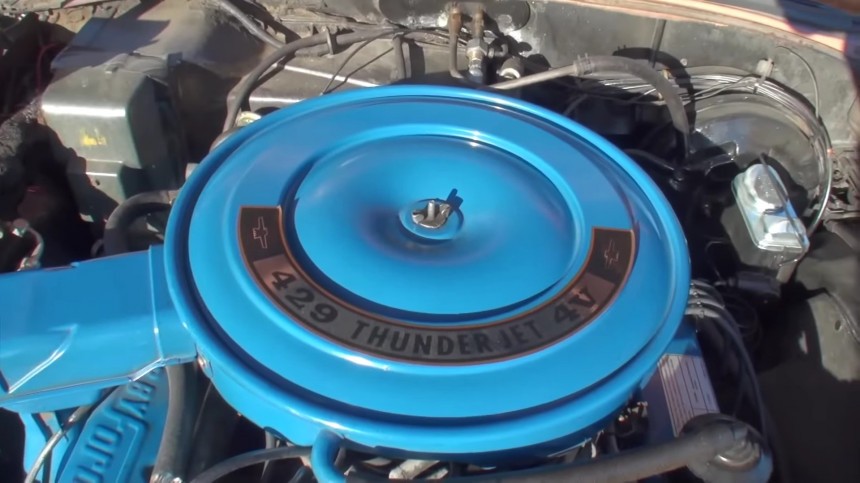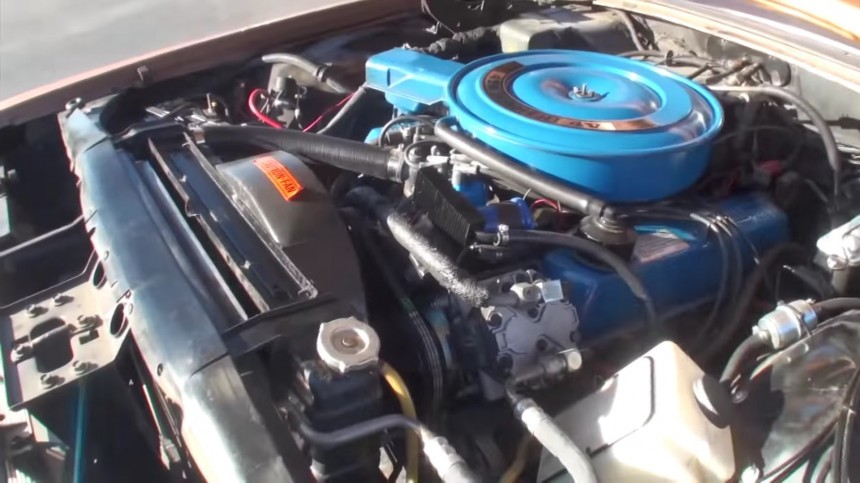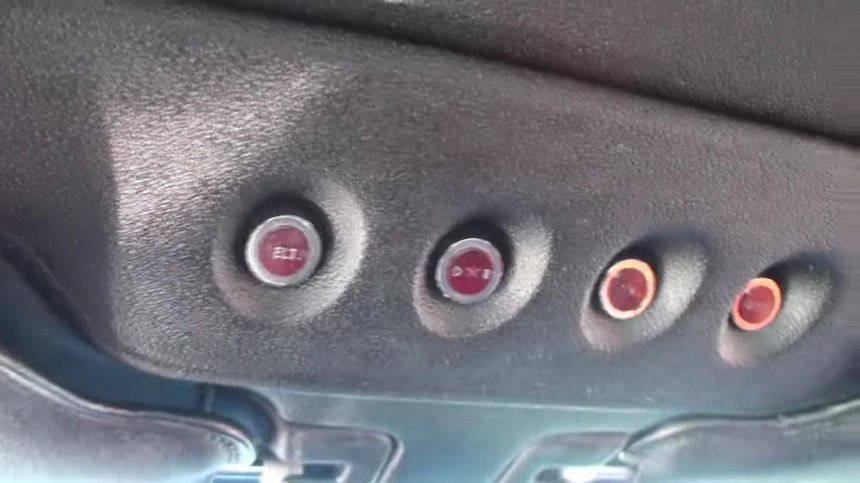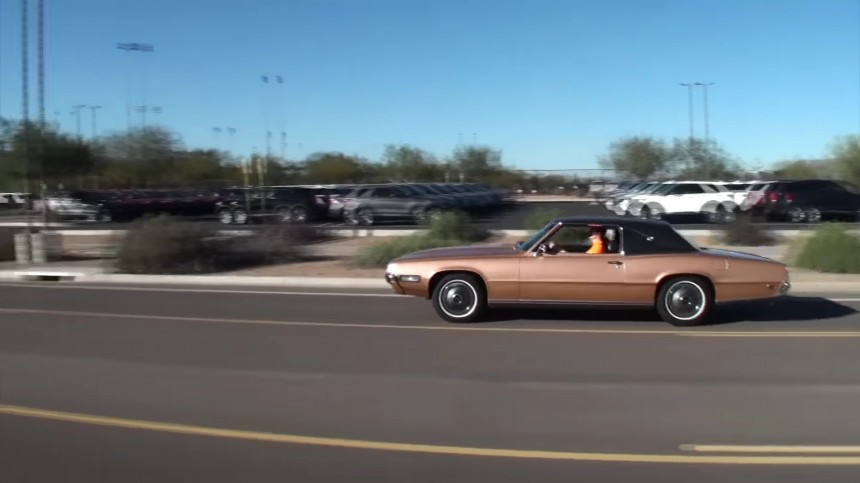1969 was a big year for Ford, but with ups and downs – the Blue Oval gave us the Bosses but also gave up on an icon: the convertible Thunderbird. Why did the Dearborn giant eliminate the soft-top emblem that resulted from its most famous model's success? The Mustang inflicted severe damage not only to the competition but to its brethren, too. As a result, only T-Birds with solid roofs were offered that year – albeit marred by sales figures disappointment.
The Mustang sparked a revolution – and it did so without reinventing the wheel – and it took over the car industry when it came out. However, the friendly fire caused victims in Ford's ranks – the Thunderbird saw itself being slowly pushed aside and then back by the new pony car.
That's one reason for the legendary "personal luxury automobile" (that was not a sportscar, as per Ford) to gain undesired weight – so it could still live on. Otherwise, the bucking Mustang would have buried it into obsolescence were it not for the T-Bird's aura and history.
Launched in 1955, the small and sexy two-seater grew in size beginning in '58 – a drastic shift that proved an enormous success and poured buyers into the dealerships. Until 1967, nothing significant happened to the fabulous Bird in terms of design paradigm: two doors, two rows of seats, and plenty of spoils.
But the fifth generation (spanning between 1967 and 1971) overlapped the pony car inception, and sales began to limp. The signs were evident with the last model years of the previous generation, and Ford acted quickly. It was still in vane: in 1969, the Thunderbird hit an all-time low (until that point) and fell under the 50,000-unit mark.
Even though the manufacturer introduced a radical style change for the fifth generation – by adding a set of extra doors for the rear passengers – the car wasn't doing well in the money-making segment. The second transformation was introduced in '69 when the legendary Bird was caged in a hardtop body variant – with two and four doors – without a ragtop alternative.
Granted, the option for a SunRoof (a retractable roof that allowed the front passengers to sit up and enjoy the breeze) was thrown in. Still, it didn't catch customers' attention. However, the nicest option – from a motor-addict perspective – was the 429 cubic inches (7.0 liter) engine.
Of the 49,272 Ford Thunderbirds assembled for the 1969 model year, the most popular trim was the two-door Landau, with 27,664 made. The suicide-door four-door sedan was a far less appealing version – 15,595 units were built – and the hardtop amassed just under 6,000 orders.
Finding an exemplary two-door Landau is challenging, and the owner of this one in our story testifies. It took him several years to find his dream car – and several Thunderbird purchases. He now owns a car from the '67, '68, and '69 model years. Why? It was his first car in the early '80s – when he was in high school.
His 1969 Copper Flame-and-black Ford rocks the original 429 four-barrel V8 – introduced that year for the T-Bird. Coincidentally, that same engine type – with a different carburetor and several high-performance internals – is also found in survivor Mustang Boss 429s.
The '69 Thunderbird wasn't a plush churchgoer or casual grocery-getter. When summoned, the 360 hp (365 PS) and 476 lb-ft (645 Nm) would quickly shame arrogant muscle cars without as much as batting an eyelid. Sure, it wasn't a regular at the track since the three-speed automatic was the only transmission available. Listen to the V8 roar in the video – it's the best treatment for Golden Age nostalgia in this electric-obsessed era.
The T-Bird kept its 'luxury' status to high standards – particularly after moving up in the Ford hierarchy, cramming Lincoln with its demeanor. I'll give you five reasons for this simile: the $499.22 automatic climate control (SelectAire Conditioner was the official sales brochure name); the $453.30 Electric Sunroof (introduced in 1969); the 6-way power bucket seats (driver's and passenger's) - $197.78; the Sure-Track brake control system - $194.31; and the AM/FM Stereo Radio - $150.29.
These five options alone would add another $1,500 to the $4,964 base price of the '69 T-Bird Landau. For a proper comparison, use the entry-level Mustang as a yardstick. The hot-selling pony started at $2,615. An appropriately luxurious Thunderbird would likely outgun a lowly Mustang price tag in options alone.
But the driver and passengers were well pampered – look at the rear lounge seat that wraps around the back of the cabin. Also, the power antenna, the tilt-away steering wheel, the push-button trunk lid, and the Convenience Check Group (the four warning lights mounted between the sun visors in the headliner) were only a few of Ford's amenities.
Interestingly, the car in this story – discovered by none other than Lou Costabile, the classic Sharing information about a classic car YouTubing detective – did not come with air conditioning (the manual temperature control cost a hefty $427). However, the automobile was built to be fitted with the option if the owner so desired, and the man who currently enjoys this lovely Bird has done just that.
The post-factory installment is factory correct, thanks to a junkyard donor. The only out-of-time – but definitely not out-of-place – addition to this otherwise survivor Thunderbird Landau is the hubcap set (that came from a 1970 model). Don't hold that against the proprietor – the car looks stunning with the non-original wheel covers.
One cool feature of this Thunderbird generation was – and still is – the lights, with the hideaway headlamps being the prominent stars of the show. But the cornering lights mounted on the front fenders (another option offered from '69 onward) and the hidden reverse lights up the wow factor by several orders of magnitude. The sequential signaling was not a new feature, but it still looked good (scroll through the gallery to see how it operated).
And let's appreciate the fiber optic rear lights monitor that indicated precisely what light bulb wasn't burning. The driver could quickly peek in the rearview mirror and check the status of the lamps – the lights monitoring units were located behind the rear seat. The featured car in this video doesn't have that feature, though – which is surprising, given how well-optioned the automobile is.
That's one reason for the legendary "personal luxury automobile" (that was not a sportscar, as per Ford) to gain undesired weight – so it could still live on. Otherwise, the bucking Mustang would have buried it into obsolescence were it not for the T-Bird's aura and history.
Launched in 1955, the small and sexy two-seater grew in size beginning in '58 – a drastic shift that proved an enormous success and poured buyers into the dealerships. Until 1967, nothing significant happened to the fabulous Bird in terms of design paradigm: two doors, two rows of seats, and plenty of spoils.
Even though the manufacturer introduced a radical style change for the fifth generation – by adding a set of extra doors for the rear passengers – the car wasn't doing well in the money-making segment. The second transformation was introduced in '69 when the legendary Bird was caged in a hardtop body variant – with two and four doors – without a ragtop alternative.
Granted, the option for a SunRoof (a retractable roof that allowed the front passengers to sit up and enjoy the breeze) was thrown in. Still, it didn't catch customers' attention. However, the nicest option – from a motor-addict perspective – was the 429 cubic inches (7.0 liter) engine.
Finding an exemplary two-door Landau is challenging, and the owner of this one in our story testifies. It took him several years to find his dream car – and several Thunderbird purchases. He now owns a car from the '67, '68, and '69 model years. Why? It was his first car in the early '80s – when he was in high school.
His 1969 Copper Flame-and-black Ford rocks the original 429 four-barrel V8 – introduced that year for the T-Bird. Coincidentally, that same engine type – with a different carburetor and several high-performance internals – is also found in survivor Mustang Boss 429s.
The T-Bird kept its 'luxury' status to high standards – particularly after moving up in the Ford hierarchy, cramming Lincoln with its demeanor. I'll give you five reasons for this simile: the $499.22 automatic climate control (SelectAire Conditioner was the official sales brochure name); the $453.30 Electric Sunroof (introduced in 1969); the 6-way power bucket seats (driver's and passenger's) - $197.78; the Sure-Track brake control system - $194.31; and the AM/FM Stereo Radio - $150.29.
These five options alone would add another $1,500 to the $4,964 base price of the '69 T-Bird Landau. For a proper comparison, use the entry-level Mustang as a yardstick. The hot-selling pony started at $2,615. An appropriately luxurious Thunderbird would likely outgun a lowly Mustang price tag in options alone.
Interestingly, the car in this story – discovered by none other than Lou Costabile, the classic Sharing information about a classic car YouTubing detective – did not come with air conditioning (the manual temperature control cost a hefty $427). However, the automobile was built to be fitted with the option if the owner so desired, and the man who currently enjoys this lovely Bird has done just that.
The post-factory installment is factory correct, thanks to a junkyard donor. The only out-of-time – but definitely not out-of-place – addition to this otherwise survivor Thunderbird Landau is the hubcap set (that came from a 1970 model). Don't hold that against the proprietor – the car looks stunning with the non-original wheel covers.
And let's appreciate the fiber optic rear lights monitor that indicated precisely what light bulb wasn't burning. The driver could quickly peek in the rearview mirror and check the status of the lamps – the lights monitoring units were located behind the rear seat. The featured car in this video doesn't have that feature, though – which is surprising, given how well-optioned the automobile is.
